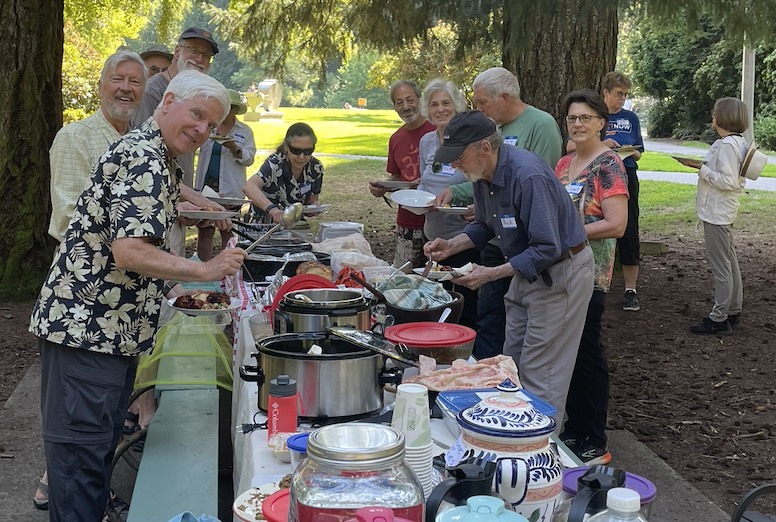
News
Letter: Urgent Support for Transit Operations Funding in the 2025 Transportation Package
Date: Friday May 2, 2025 To: Senate President Rob Wagner, House Speaker Julie Fahey JCT Co-Chairs Senator Chris Gorsek and Representative Susan McLain Cc: Joint Committee on Transportation RE: Urgent Support for Transit Operations Funding in the 2025 Transportation Package Oregon is…
Letter: Support for safety investments in the 2025 Transportation Package
Date: Friday May 2, 2025 To: Senate President Rob Wagner, House Speaker Julie Fahey Joint Committee on Transportation Co-Chairs Chris Gorsek, Susan McLain Joint Committee on Transportation Co-Vice Chairs Shelly Boshart-Davis, Bruce StarrRe: Support for safety investments in the 2025…
Letter: Mechanisms for Cost and Climate Accountability in the 2025 Transportation Package
Date: Friday May 2, 2025 To: Senate President Rob Wagner, House Speaker Julie Fahey Joint Committee on Transportation Co-Chairs Chris Gorsek, Susan McLain Joint Committee on Transportation Co-Vice Chairs Shelly Boshart-Davis, Bruce StarrRe: Mechanisms for Cost and Climate Accountability in…
Support for Increased Transit Funding in the 2025 Transportation Package Needed to Avoid Service Cuts
April 7, 2025 To: Representative Susan McLain, Co-Chair of the JCTSenator Chris Gorsek, Co-Chair of the JCTCc: Senator Rob Wagner, President of the SenateRepresentative Julie Fahey, Speaker of the House Re: Support for Increased Transit Funding in the 2025 Transportation Package…
Comments on the Draft Interim Implementation Plans for State Forests
To: Oregon Department of ForestryFrom: State Forest Coalition Date: March 21, 2025 Re: Comments on the Draft Interim Implementation Plans for State Forests Thank you for the opportunity to provide comments on the Oregon State Forest Implementation Plans (IPs). These comments are submitted…
MCAT Joins with partners in strong opposition to House Bill 3247 (HB 3247)…
March 7, 2025 Representative John Lively, ChairmanHouse Committee On Climate, Energy and EnvironmentOregon State Capitol900 Court St. NE, Salem Oregon 97301 Dear Chair Lively, Vice-chairs Bobby Levy and Gamba and members of the committee: On behalf of Oregon Environmental Council and the organizations…
RE: UM 1696 – Comments supporting Staff’s recommendation to approve major cost-effectiveness exceptions for multiple heat pump measures, as requested by Energy Trust of Oregon.
January 21, 2025Oregon Public Utility Commission201 High Street SE, Suite 100Salem, OR 97301-3398 Delivered via email to: puc.filingcenter@puc.oregon.gov RE: UM 1696 – Comments supporting Staff’s recommendation to approve major cost-effectiveness exceptions for multiple heat pump measures, as requested by Energy Trust of…
State Forester Values, Qualifications and Priorities Feb 18, 2025
To: Governor Tina Kotek, Oregon Board of Forestry From: Wild Salmon Center, Oregon Wild, Sierra Club Oregon Chapter, Cascadia Wildlands, Bird Alliance of Oregon, MCAT, 350PDX, Oregon League of Conservation Voters, North Coast Coast Communities for Watershed Protection, Great Old Broads…
Bend Bulletin Guest column: Electrify to decrease gas dependence and meet climate targets
BY PAT DELAQUIL and JOHN PERONA Feb 11, 2025 A recent guest column in the Bulletin used a story — that the city of Bend might regulate natural gas hookups for new residential construction as one way…
OPUC UM 2348 – Integrated Resource Plan (IRP) and Request for Proposals (RFP) Comments on Workshop #3
Re: UM 2348 – Investigation into Integrated Resource Plan (IRP) and Request for Proposals (RFP) Modernization – Comments on Workshop #3…
MCAT Letter of Support for Oregon Climate Action Commission 2025 Work Plan
We need to do even more to incentivize climate smart forestry….
Protecting Oregon’s Forests: A Call to Align State Forest Management with Climate and Conservation Goals
Introduction Oregon’s forests are not only a source of natural beauty but also a critical resource for carbon storage, biodiversity, and economic stability. The recent communication from the State Forest Coalition Groups to the Oregon Board of Forestry highlights a pivotal moment for…
Standing Firm for Oregon’s Clean Energy Future in Uncertain Times
As the dust settles following the recent U.S. elections, many in the climate community face an unsettling reality about the nation’s environmental trajectory. At this critical juncture, Mobilizing Climate Action Together (MCAT) has joined forces with key environmental advocates to…
MCAT sign-on letter to the OPUC in support of PacifiCorp’s WattSmart program.
This letter was published on behalf of Sierra Club, MCAT, CUB, and OSSIA in response to PacifiCorp’s WattSmart Program. Sierra Club, Mobilizing Climate Action Together (MCAT), the Oregon Citizens’ Utility Board (CUB), and the Oregon Solar + Storage Industries Association (OSSIA) (collectively,…
MCAT Letter of SUPPORT for NEXT Renewable Fuels 401 Water Quality Certification
From: Dr. John Perona, on behalf of Mobilizing Climate Action Together Mobilizing Climate Action Together (MCAT) is a group of experienced volunteer healthy climate advocates affiliated with the Oregon League of Conservation Voters. We write to urge that the Oregon Department of…
Letter submitted for the Listening Tour hearings of the Joint Committee on Transportation. 9/25/24
Dear Co-Chairs Gorsek and McLain and members of the Committee, Our transportation system planning should focus on maintenance and operation of current facilities, on safety improvements to reduce injuries and fatalities, and on modernizing seismic resilience. As the funding streams on…